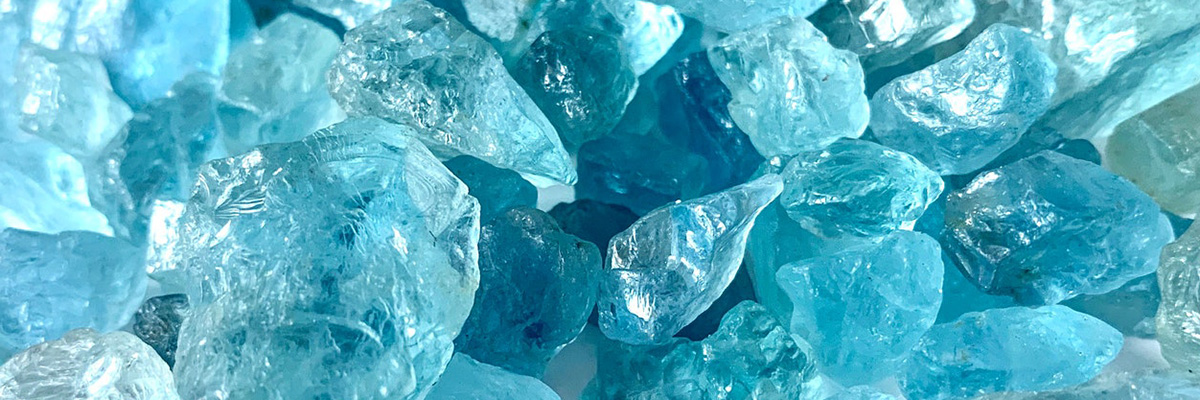Aquamarine is a variety of beryl, a mineral composed of beryllium aluminum cyclosilicate, and belongs to the hexagonal crystal system. The gemstone exhibits a range of captivating blue hues, from pale sky blue to deep ocean blue, due to trace amounts of iron in its crystal structure. Aquamarine is prized for its vitreous luster, excellent clarity, and transparent to translucent appearance.
Usage
Aquamarine’s primary usage is as a gemstone, widely appreciated for its beautiful blue color and excellent clarity. It is popularly used in various types of jewelry, including rings, necklaces, earrings, and bracelets. Aquamarine is also used for ornamental carvings and figurines, as well as in the creation of decorative objects and art pieces.
Gemstone
Aquamarine is a highly sought-after gemstone, valued for its stunning blue color, which is reminiscent of the sea. This gemstone is also admired for its excellent clarity and durability, making it a popular choice for various types of jewelry. Aquamarine is often associated with tranquility, calmness, and harmony, and is favored by those seeking a gemstone that evokes the serenity of the ocean. The birthstone of March, aquamarine makes an exquisite gift for those born in this month, or anyone who appreciates the beauty and symbolism of this remarkable gemstone.
Origin
Aquamarine is formed in nature through the cooling and solidification of magma rich in beryllium, aluminum, and silica. The presence of iron in the crystal lattice gives aquamarine its characteristic blue color. This gemstone can be found in a variety of geological environments, including granite pegmatites and hydrothermal veins, where it forms well-developed hexagonal prismatic crystals.
Occurrence
Aquamarine is found in numerous locations around the world, with significant deposits in countries such as Brazil, Madagascar, Nigeria, Zambia, and Russia. The United States also hosts notable aquamarine occurrences, particularly in Colorado and North Carolina. These areas provide a diverse range of geological settings suitable for the formation of aquamarine, resulting in a variety of hues and crystal sizes.
Metaphysical
In metaphysical and spiritual practices, aquamarine is believed to possess calming and balancing energies. The gemstone is thought to promote inner peace, clarity, and emotional healing, making it a popular choice for those seeking to reduce stress and enhance self-expression. Aquamarine is also associated with the throat chakra, encouraging open and honest communication and fostering a sense of harmony and understanding between individuals.
| Class | Cyclosilicates |
| Formula | Be3Al2Si6O18 |
| Luster | Vitreous |
| Hardness (Mohs) | 7.5 – 8 |
| Streak | White |
| Color | Pale to deep blue, greenish-blue |
| Cleavage | Imperfect in one direction |
| Specific Gravity | 2.68 – 2.74 |


